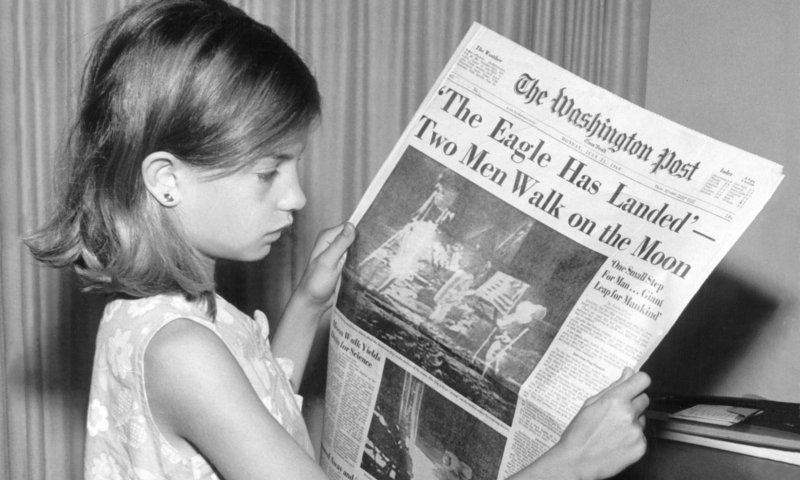Last night I found myself looking at the Moon and thinking about Neil Armstrong's impact. This amazing scientist and courageous explorer is no longer among living, but his achievements still amaze us who outlived him. Truly, Armstrong is an iconic figure and many people look up to him dreaming to write their names in history. Many would like to step on the soft lunar soil and make a couple of historical steps. However, this small stroll is not the only thing that Armstrong should be praised for. On July 20 of 1969, Armstrong was not only a brave space explorer and excellent engineer test pilot, but also a meticulous explorer and enthusiastic scientist. I hardly believe that there could be a better person to carry out this amazing trip to the Moon than Neil.

The Washington Post on Monday, July 21, 1969, Wikipedia
It is not a secret that an explorer had only two and half hour to stroll around. The time was tight and the schedule included lots of tasks such as planting the U.S. flag, conducting a couple of important experiments, filming the landing, gathering various samples, and talking with President Nixon. When the schedule is so tight, there is little time for science and exploration. One may think that Armstrong did only what he was supposed to do, but he decided to devote some time to geological exploration. Despite having limited amount of knowledge in the field of geology, Armstrong made his 30 minutes of exploration glorious!

Apollo 11 Lunar Surface Journal
Immediately upon landing, Armstrong collected a handful of lunar soil and put it in a bag. This was the contingency sample. However, Armstrong didn’t stop after that and included a couple of small rocks and described samples as meticulously as he could including a detailed description of lunar surface. A couple of moments later, he found a couple of shining pieces of glass – a product of extreme heat. Such heat is a result of meteorite impact. During his moonwalk, Armstrong made a small trip to a crater 60 meters away from Eagle. This was a large crater, over 24 meters in diameter. Armstrong made a photo of a crater. This trip was never planned and we would have never received valuable pieces of information about the Moon, if Armstrong didn’t visit this crater.
Armstrong once again demonstrated his scientific curiosity when collecting rocks. He picked up as many different samples as possible. When he ran out of time, he noticed that there still was some room in the box and filled it with lunar dust. This dust is a valuable part of sample collection brought from the Moon. Armstrong’s decision making still amazes scientists. In 1972, Harrison "Jack" Schmitt, the only geologist who visited the Moon, said that Armstrong’s half hour is the most productive time period ever spent exploring the Moon.
When Armstrong was piloting Eagle, he saw that the landing site is close to a truly large crater surrounded by huge boulders. This landing site was dangerous, but could yield amazing geological samples. Armstrong considered trying to land there, but with fuel running out, he decided to pick a more suitable place to land Eagle. Later in 1988, he said that he didn’t have enough courage to try landing in the crater or near it. However, his scientific courage and explorer determination alongside skills made his trip one of the most important moments in the history of space-exploration.
